Sometime in the early 1960s, my new job involved lots of driving round the country (UK) but I always tried to find a moment to pop into any antique or second-hand bookshop I passed. My funds then were by no means lavish but I did pick up one or two items which still give me pleasure and which retain the fascination they had when I came upon them.
One such item is pictured here . . . although it only got its frame a couple of years ago and previously lived in a portfolio, being visited rather seldom. But each time I renew acquaintance I am stunned anew. I get tingling up the spine as with certain pieces of music. I get a magnifying glass and go for journeys round this enchanted land.
Here are a few close-ups and, if you click, you should get them much bigger.
The complete piece of paper is only 18.5 x 10cm but look below at the trio (or quartet, if you count the horse!) to the extreme left. These characters, walking or riding up the hill with their long pikes or staves are recognizably individuals – and each about 1mm.
Below is my favourite bit, much enlarged. The idea of sailing under those wind-blossomed sails towards that idyllic shore-side town seemed utterly romantic.
So, what do we have here? Clearly it was a piece of an engraving but, until recently, my almost complete lack of knowledge of the subject did not help me towards an identification. A year or so ago, I did have the opportunity of talking to an ‘expert’ and I showed him the sliver of paper. For a few seconds I could almost hear the hard-disk whirring in his head and then a finger shot out and pointed to a spikey thing about a quarter of the bottom edge in from the right. ‘Ah’, he said, ‘It is Albrecht Durer’s The Sea Monster but you have lost all the main subject and an inch off the top. It is, I am afraid, OF NO VALUE’
INDEED! Here is the proper thing (off the internet) and it is indeed magnificent but what have I got?
I have a piece of paper more than five hundred years old on which is printed an image which was drawn and engraved in 1498 by Durer, aged 27 at the time. It is, I gather, now thought that he probably did not actually cut his wood blocks himself but I am sure that it would be he who was guiding the burin So, at the very least, this paper was directly printed from a piece of metal that was touched in one way or another by this consummate artist.
Of no value . . . . . . ?

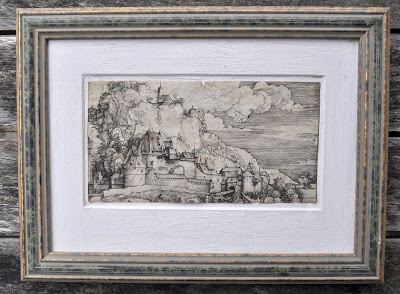
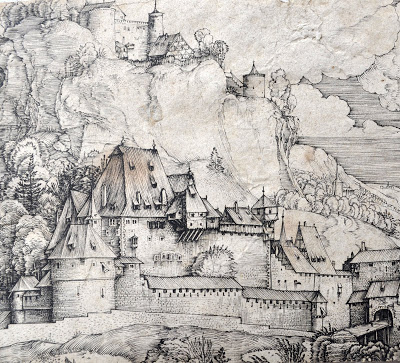
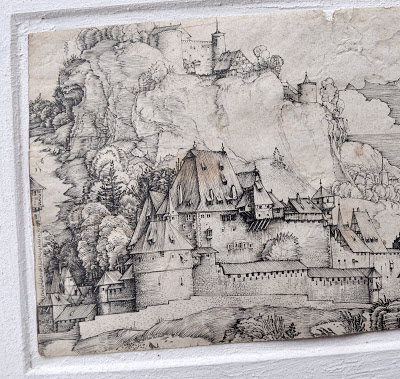
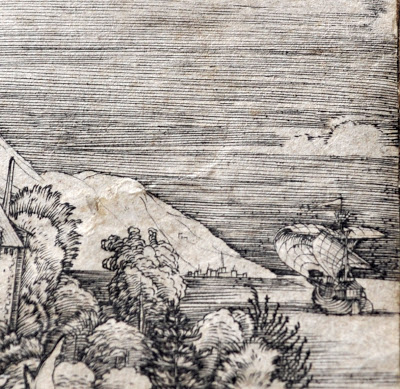
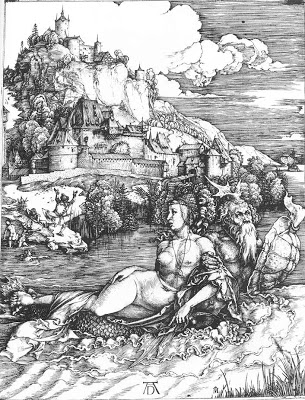
Nicolas, how extraordinary and wonderful! Even if it were not by the Master it would be a beautiful engraving but to make this discovery is…well, what can I say?
Now if you could just pursue the mystery of how it lost its bottom half and where this essential piece ended up? A historical novel coming up?
I like to think, my dear Natalie, that a previous owner (of the complete object) was as besotted with the detail as I am and moved so close to the candle on the desk in his study that the bottom bit of the print caught fire (along with his beard probably) and we have the largest bit he could salvage. The top strip? I think that was scrapped for reasons of proportion. Otherwise the scrap would have looked top-heavy.
But, then, I wasn't there!
Nicolas